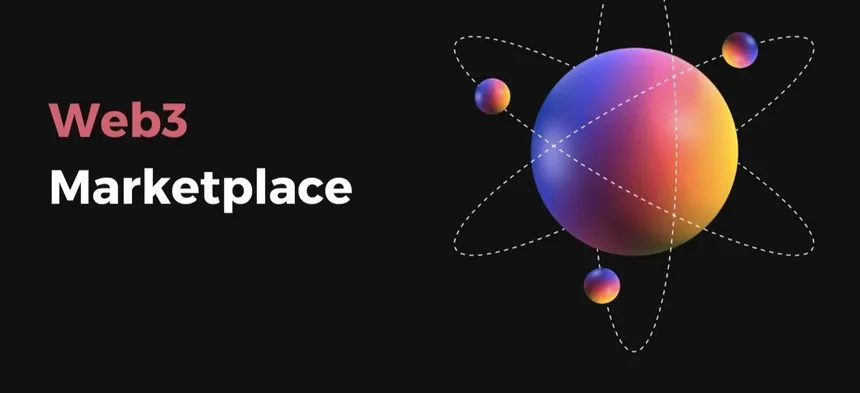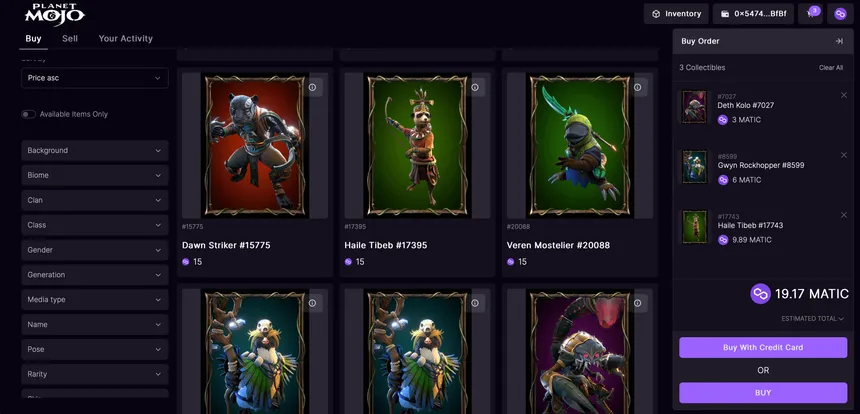Web3 Marketplaces: Redefining the Way We Buy and Sell Online
 Ayan
Ayan
The concept of Web3 represents the next evolution of the internet, often referred to as the decentralized web. It is built on blockchain technology and emphasizes user ownership, transparency, and decentralization. One of the most exciting applications within the Web3 space is the Web3 marketplace. These marketplaces are reshaping how we buy, sell, and interact with digital and physical assets online.
In this article, we will explore the fundamentals of Web3 marketplaces, how they work, and why they matter.
What is a Web3 Marketplace?
A Web3 marketplace is a digital platform where users can trade goods, services, or assets in a decentralized manner. Unlike traditional marketplaces (such as Amazon or eBay), Web3 marketplaces operate on blockchain networks, removing the need for intermediaries like payment processors or centralized authorities.
Key Features of Web3 Marketplaces:
Decentralization: Powered by blockchain, these marketplaces distribute data and control across a network of nodes rather than relying on a central server.
Ownership: Users retain full control over their data, assets, and transactions through cryptographic wallets.
Smart Contracts: Transactions are automated and governed by self-executing contracts, ensuring security and transparency.
Tokenization: Items can be represented as tokens on the blockchain, including NFTs (non-fungible tokens) for unique assets and cryptocurrencies for payments.
Interoperability: Many Web3 marketplaces operate across multiple blockchains, enabling broader accessibility.
How Does a Web3 Marketplace Work?
User Wallet Connection: Users connect their crypto wallets (such as MetaMask or Coinbase Wallet) to interact with the marketplace. This acts as their identity and payment method.
Listing and Browsing: Sellers list assets (e.g., NFTs, digital art, domain names, or even physical goods), while buyers browse available items.
Transaction Execution: Buyers initiate purchases, which are processed via smart contracts. These contracts handle payments and transfer of ownership automatically.
Verification and Ownership: Blockchain ensures that all transactions are verifiable and recorded publicly. Buyers gain provable ownership of purchased assets.
Types of Web3 Marketplaces
1. NFT Marketplaces
Examples: OpenSea, Rarible, Magic Eden
Focus: Buying and selling NFTs, including art, music, collectibles, and in-game assets.
2. DeFi Marketplaces
Examples: Uniswap, SushiSwap
Focus: Decentralized trading of cryptocurrencies and liquidity provisioning.
3. Physical Goods Marketplaces
Examples: Origin Protocol, Boson Protocol
Focus: Enabling decentralized commerce for real-world items.
4. Service Marketplaces
Examples: Braintrust, Ethlance
Focus: Connecting freelancers with clients via decentralized platforms.

Benefits of Web3 Marketplaces
Trustless Transactions: Smart contracts ensure transparency and reduce the risk of fraud.
Global Access: Anyone with internet access and a crypto wallet can participate.
Lower Fees: By eliminating intermediaries, transaction costs are reduced.
Censorship Resistance: Decentralization makes it difficult for authorities to censor or restrict access.
Programmable Commerce: Smart contracts enable unique features like royalties for creators or time-locked payments.
Challenges and Limitations
While Web3 marketplaces are transformative, they are not without challenges:
Scalability: Blockchain networks often face high transaction fees and slow processing during peak demand.
User Experience: Navigating wallets and blockchain technology can be intimidating for newcomers.
Regulatory Uncertainty: Governments are still defining legal frameworks for decentralized platforms.
Security Risks: Hacks and scams can occur, especially if smart contracts are poorly coded.
Why Do Web3 Marketplaces Matter?
Web3 marketplaces are revolutionizing the way people interact with digital and physical assets. They empower creators, reduce dependency on centralized corporations, and introduce new economic opportunities through tokenization. As blockchain technology matures, Web3 marketplaces will likely become a cornerstone of the global digital economy.
Conclusion
A Web3 marketplace is not just a platform—it’s a new paradigm in commerce. It shifts the power dynamics from corporations to individuals, enabling greater transparency, fairness, and innovation. Whether you're an artist, a developer, or a consumer, Web3 marketplaces provide exciting opportunities to participate in the evolving internet landscape.
As adoption grows, these marketplaces could redefine how we think about ownership, trade, and the value of digital and physical goods in the modern world.
Subscribe to my newsletter
Read articles from Ayan directly inside your inbox. Subscribe to the newsletter, and don't miss out.
Written by

Ayan
Ayan
"I post blogs here in a simple way, so that a 5-year-old can read and understand them."